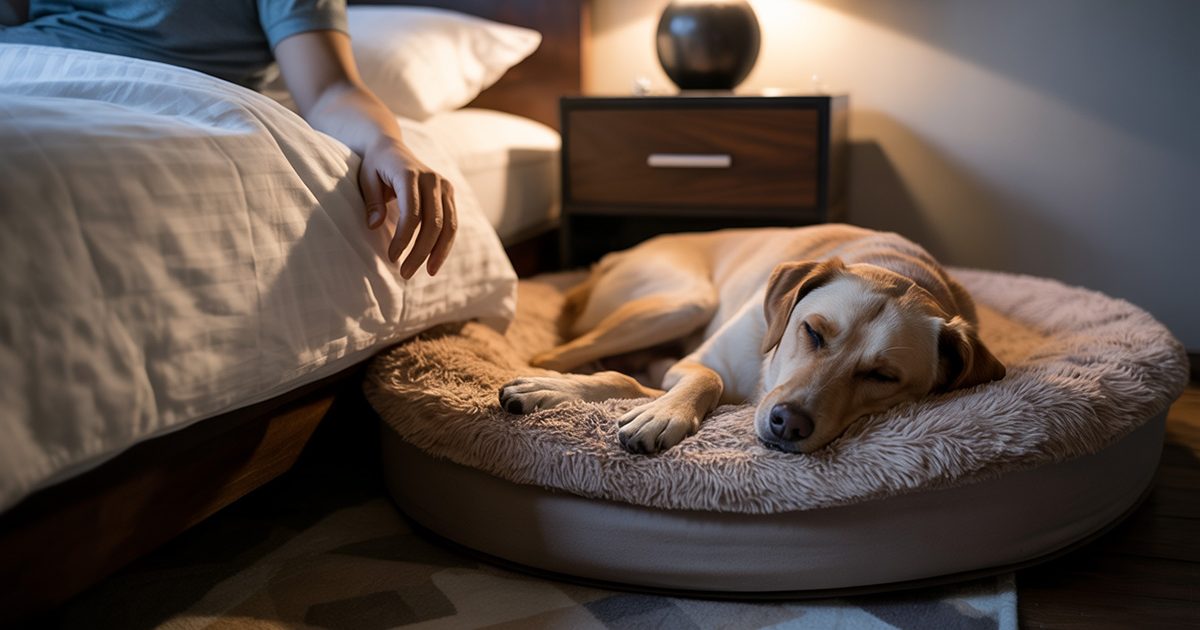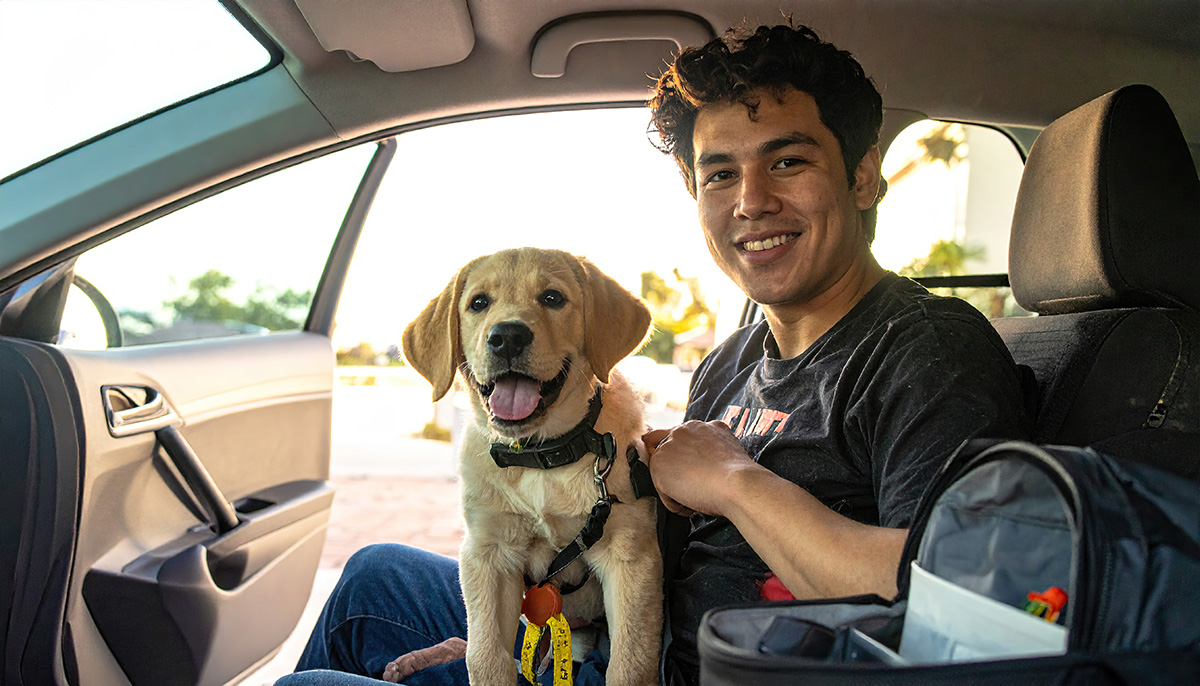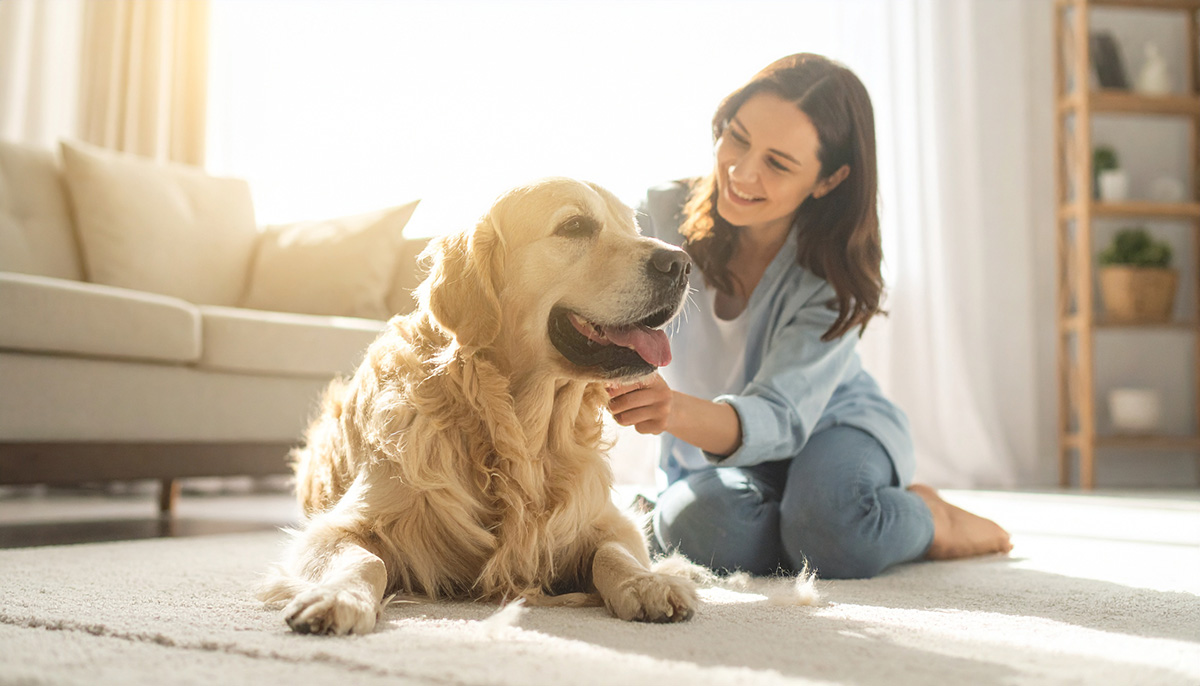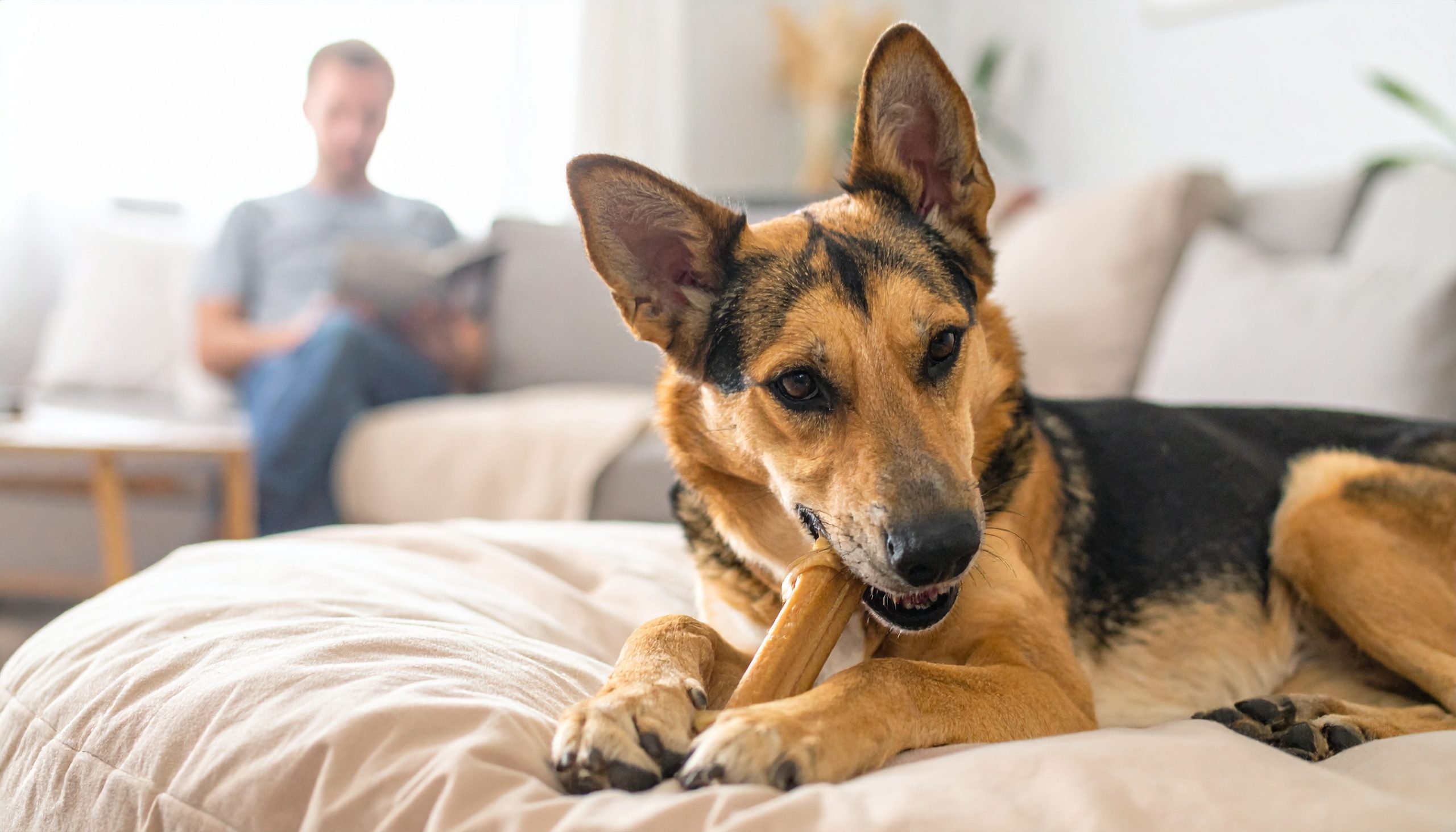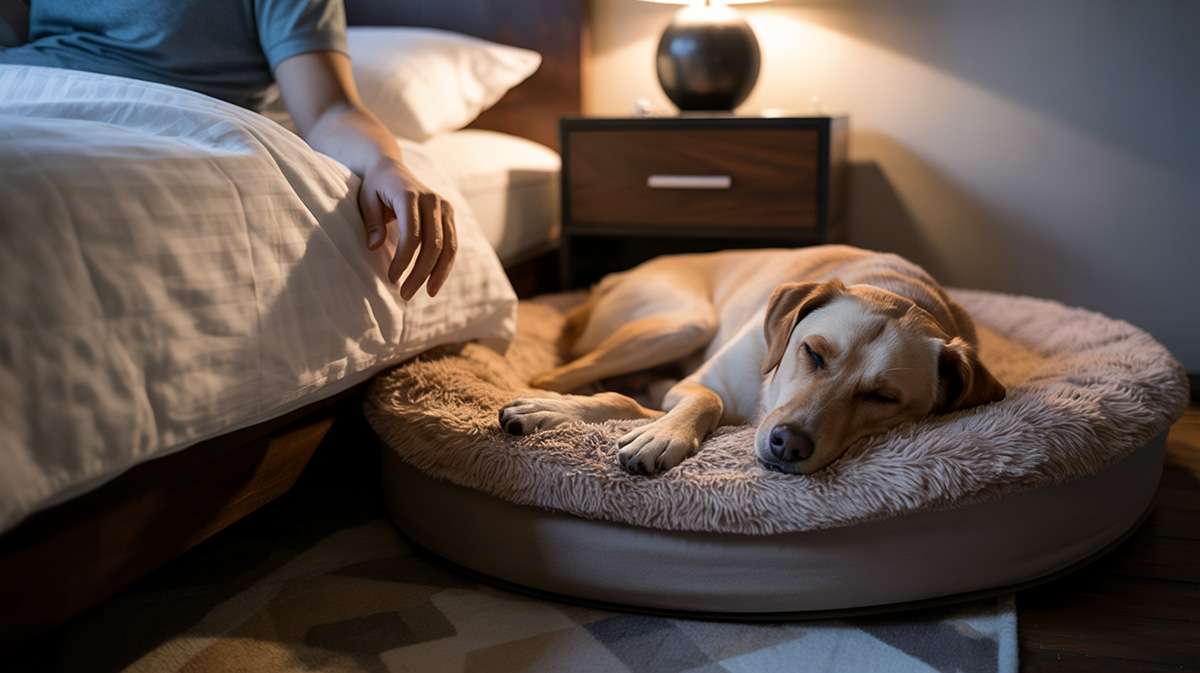Dogs separation anxiety at night
Nighttime usually brings a welcome quiet after a busy day.Dogs separation anxiety at night, For many dog owners, though, this peace is interrupted by a pet who whines, barks, scratches at the door, or chews things. If your dog is relaxed during the day but gets anxious when it’s time for bed, you may be dealing with nighttime separation anxiety.
This is more than just a quirky behavior. Your dog is truly distressed and isn’t trying to be difficult. Imagine sitting in a dark room, with a feeling of dread creeping in as the walls seem to close in around you. This is akin to what your dog feels—an overwhelming sense of panic from being away from you, their trusted person. With patience, consistency, and the proper steps, you can help your dog feel calmer at night and regain a restful sleep.
This guide explains the root causes, shares proven techniques, and helps create a calm sanctuary for your dog. For severe cases, seek professional help. A certified behaviorist or veterinarian can offer tailored guidance.
Understanding the “Why”: It’s More Than Just Missing You ”Dogs separation anxiety at night”
Before addressing solutions, it is essential to understand this behavior. Nighttime separation anxiety differs from general anxiety or boredom. It’s about panic triggered by being away from you, even in the next room.
Key Differences: Separation Anxiety vs. Other Nighttime Issues
- Separation Anxiety: Symptoms occur primarily or exclusively when you are physically separated (e.g., you’ve gone to bed in your room and closed the door). The distress is about the separation itself.
- General Anxiety/Fear: This could be triggered by external noises (thunder, fireworks), shadows, or a general state of nervousness that isn’t specifically tied to your absence.
- Boredom & Lack of Exercise: A dog with pent-up energy may be destructive or vocal at night simply because they aren’t tired enough to sleep.
- Medical issues: Can often underlie behavioral concerns such as nighttime restlessness. Pain, stomach discomfort, or conditions like canine cognitive dysfunction (also known as doggie dementia) can disturb your dog’s peace at night. Always consulting with your veterinarian first is essential to rule out any potential medical causes before addressing behavioral training. Remember, training cannot override untreated pain. Early medical screening ensures that you address these root causes and start on the right foot in helping your dog feel more comfortable at night.
Common Triggers for Nighttime Anxiety
- The Crating Conundrum: While crates are wonderful safe havens for many dogs, for an anxious dog, being locked in a crate can feel like a prison, amplifying their panic.
- Change in Routine: A move to a new house, a new family member, a change in your work schedule, or even a different bedtime can trigger insecurity.
- Prior Negative Experience: A dog from a shelter may have past trauma associated with being alone at night.
- Learned Behavior: If whining or barking has successfully brought you to their side in the past, they have learned that this behavior works to end the unpleasant feeling of separation.
The Pre-Bedtime Protocol: Setting the Stage for Success

A peaceful night starts hours before bedtime; your evening routine sets the stage for restful sleep.
1. The Power of Exercise and Mental Stimulation
A tired dog sleeps well, but being mentally engaged is as important as physical exercise.
- The Evening Walk: Don’t just let your dog out in the yard. Go for a structured 20-30 minute walk about 1-2 hours before bed. This provides both physical exercise and mental stimulation from sniffing.
- Brain Games: About 30 minutes before you start winding down, engage your dog’s brain. This is more effective than physical exercise alone in tiring them out.
- Food Puzzles: Use a Kong Wobbler, a snuffle mat, or a classic Kong stuffed with their kibble, xylitol-free peanut butter, and mashed banana, then freeze it.
- Training Session: Practice 5-10 minutes of basic obedience (sit, stay, down). This reinforces your bond and provides mental focus.
2. The Last Call: Mastering the Potty Schedule
Sometimes, anxiety can appear as if your dog just needs to go out. Ensure your dog has a calm, final potty break before bedtime. Keep it quiet and focused on the task. This way, you know their restlessness isn’t just about needing to go outside.
3. The Wind-Down: Creating a Calm Household Environment
Dogs pick up on our mood and energy. If you move quickly, keep the TV loud, or use your phone right up until bedtime, your dog won’t have a chance to settle down either.
Dim the Lights: An hour before bed, start dimming the lights in the house.
Reduce Stimulation: Turn off the TV, put away exciting toys, and speak in softer tones.
Calming Scents: Consider using an Adaptil (a dog-appeasing pheromone) diffuser in the room where your dog sleeps. These synthetic pheromones mimic the calming scents produced by a mother dog and can signal safety.
The Training Toolkit: Behavior Modification Techniques

Addressing separation anxiety effectively requires patience and consistency, but it leads to lifelong benefits. Key techniques in behavior modification include crate training, systematic desensitization, and counter-conditioning.
1. Crate Training: Sanctuary, Not Prison
If your dog’s anxiety is linked to the crate, it’s crucial to rebuild a positive association with it. Make the crate inviting by leaving the door open, placing comfy bedding, special toys, and high-value treats inside. Gradually get your dog accustomed to being in the crate by feeding them inside and practicing short durations with the door closed, slowly increasing the time. Reinforce calm behavior with rewards, progressing to leaving the room for brief periods of time.
Important: If your dog panics in the crate, consider alternatives like a puppy-proofed room or playpen.
2. Systematic Desensitization and Counter-Conditioning: Redefining Alone Time
These combined techniques help your dog gradually get used to being alone. Start with the “Step-Out” Game: Have your dog go to their bed or crate with a high-value chew, touch the door handle, and if they remain calm, reward them. Slowly increase the challenge by stepping out for short periods. To change their emotional response to your departure, introduce a special treat or toy that only appears when you are about to leave, helping them associate your absence with positive experiences.
The most crucial aspect is moving at a pace that your dog is comfortable with. If they become uneasy, revert to the last calm step and proceed more slowly, ensuring the training remains a positive experience.
Creating the Perfect Sleep Environment
Where and how your dog sleeps can make a world of difference.
Creating an ideal sleep environment involves more than simply finding a space for your dog. Consider a cool, dark corner that smells faintly of lavender. This aligns with your dog’s natural sleep instincts, providing both comfort and security.
The Great Debate: In Your Bed vs. In Their Bed
There’s no single answer, and the old idea of ‘never let your dog in your bed’ is being questioned.
Allowing in Your Bed: For some dogs, the physical closeness is exactly what they need to feel secure. The sound of your breathing and heartbeat can be incredibly calming. If this works for your family and doesn’t create dependency issues (e.g., the dog becomes anxious if they can’t sleep in the bed), it can be a perfect solution.
A Bed in Your Room: This is often the ideal middle ground. Your dog is close enough to know you’re there, reinforcing the “pack” feeling, but has their own space. Place a comfortable dog bed on the floor right next to your side of the bed, where they can see or smell you.
Having your dog sleep in a separate room is the hardest option for dogs with separation anxiety. Treat this as a long-term goal, not something to try right away. Wait until you’ve made real progress with training before attempting it. Take your time and let your dog adjust slowly.
The Role of White Noise and Music
Silence can be unnerving, amplifying every little creak in the house.
- White Noise Machines: These are excellent for masking outside sounds that might startle your dog.
- Calming Music: Studies have shown that specific types of music, like classical music or reggae, can reduce stress in dogs. There are even playlists and albums specifically designed for canine anxiety.
What to Do (and NOT Do) During an Anxiety Episode
It’s 2 AM, and the whining starts. Your reaction in this moment is critical.
What NOT to Do:
Don’t yell or punish your dog. They aren’t being stubborn—they’re scared. Punishing them will only make their fear and anxiety worse. The best thing you can do is stay calm and avoid reacting harshly to their anxious behavior.
· DO NOT Rush to Them: If you run to your dog the moment they whine, you are rewarding the behavior. You’ve just taught them that whining makes you appear.
What TO Do:
The “Boring & Calm” Method: If you feel you need to check on them (to ensure they aren’t hurting themselves), wait for a brief moment of quiet. Then, approach calmly and quietly. Do not make eye contact, speak in baby talk, or offer lavish pets. Simply say a calm, boring word like “enough” or “settle.” Your energy should communicate that everything is fine and there’s no emergency.
The “Be a Tree” Method: Often, the best reaction is no reaction. Ignore the whining completely. This can be incredibly difficult, but it teaches them that the behavior is ineffective. To succeed with this method, adopt a calm body language: keep your shoulders soft and your gaze averted. Avoid giving any accidental cues that may unintentionally reinforce their behavior. You must outlast them.
Additional Support: Tools and Supplements
Sometimes, training needs a little boost.
- Calming Supplements: Ingredients like L-Theanine, L-Tryptophan, and Melatonin can promote relaxation. Always check with your veterinarian before administering any new supplement to your dog.
- Thundershirts/Anxiety Wraps: These garments apply a gentle, constant pressure that can have a calming effect on some dogs, similar to swaddling a baby.
- Prescription Medication: In severe cases, anti-anxiety medication from your vet can be a game-changer. It’s not a “quick fix” but a tool that can lower your dog’s overall anxiety enough for the behavior modification training to actually work. Don’t view this as a failure; it’s a responsible and compassionate option for an animal in distress.
A Sample 7-Day Nighttime Routine to Get You Started
Day 1-2: Foundation & Observation
- Evening: 25-minute sniff-heavy walk.
- 30 mins before bed: 10-minute training session.
- Bedtime: Calm potty break. Set up their bed next to yours with a familiar blanket. Ignore any whining, practicing the “be a tree” method. Note the duration and intensity of the anxiety.
To enhance reflection and track progress, maintain a simple nightly log during these first two days. Record the time it takes for your dog to settle and rate the intensity of their anxiety on a scale from 1 to 10. This helps highlight subtle improvements and informs any necessary adjustments in the exercises. By charting these metrics, you reinforce patience and can celebrate incremental wins.
Day 3-4: Introducing the “Special Toy”
- Evening: 25-minute walk + a food puzzle.
- Bedtime: Calm potty break. As you get into bed, give your dog the “special” Kong in their bed. Do not engage further. If they whine, ignore.
Day 5-7: Beginning Desensitization
- Evening: Walk and mental stimulation as before.
- Before Bed: Practice the “Step-Out” game at the bedroom door for 5 minutes.
- Bedtime: Give the special toy and go to bed as usual.
When to Seek Professional Help
If you’ve been consistent for several weeks with no improvement, or if your dog’s behavior is destructive or self-harming (e.g., breaking teeth on a crate, licking raw spots), it’s time to call in a professional. Look for a Certified Professional Dog Trainer (CPDT) or a Veterinary Behaviorist (DACVB). They can provide a tailored behavior modification plan and assess if medication is appropriate.
Conclusion: Patience, Consistency, and Empathy are Key
Helping a dog overcome separation anxiety at night is a journey, not a destination. There will be setbacks and frustrating nights. But by understanding that your dog is acting out of fear, not spite, you can approach the problem with empathy.
Establish a good pre-bedtime routine, use steady training, create a comfortable sleep space, and respond calmly and consistently when your dog becomes anxious. Notice and celebrate small wins, like when your dog whines for only five minutes instead of twenty, or when they settle in their own bed for the first time.
With time, patience, and care, your anxious dog can become a calm, restful companion at night. Soon, both of you will wake up feeling refreshed and ready to enjoy a new day together.


